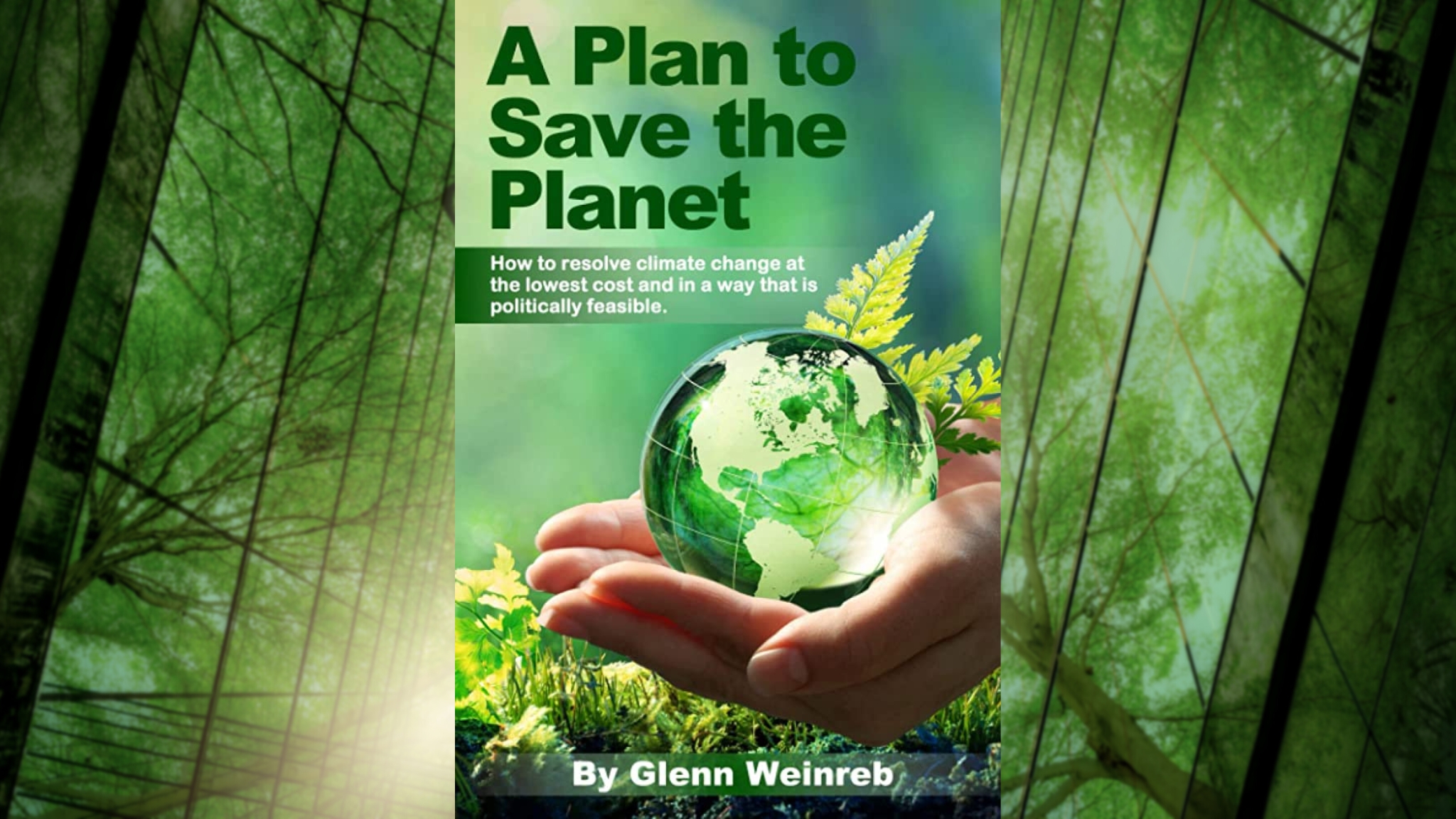A Plan to Save the Planet by Glenn Weinreb
What's It About?
A detailed and hands-on guide for comprehensive solutions to crucial challenges in environmental sustainability.Glenn Weinreb’s practical guide cuts through our environmental angst to provide straightforward explanations of our current energy systems and how to transform them for the health of our earth. He offers sustainable programs to promote stewardship of our planet and humanity itself.
Our society’s conversation about environmental calamity often lingers on how much plastic whales consume every day or the degree of damage lawn fertilizers wreak on our rivers. This discourse often leaves readers and viewers overwhelmed, misinformed and feeling helpless.
Instead, A Plan to Save the Planet suggests clear numbers and actionable solutions that empower the serious reader to tackle real-world scenarios.
Time for Change
Entrepreneur-turned-educator Glenn Weinreb directs a non-profit project that supports climate-change research and publicity. His primary goal is to spread vital information to everyone at no cost — the text is in the public domain and is summarized in TEDx talks. Search “Glenn Weinreb” on TED.com or watch here: “How to Resolve Climate Change at Lowest Cost” and “A Plan to Save the Planet”.
From the book’s start, Weinreb acknowledges that his plan will bring about major growing pains. In the same way that the Industrial Revolution upended its generation’s way of life on both an individual and global scale, turning to green energy is a daunting challenge that governments and the heads of dominant industries will grapple with.
Enormous incentives are a must to urge leaders of industries and regions that produce environmentally harmful fuels, as well as the political representatives who advocate for them, to adopt healthier methods of production. Understanding what those powers need is essential for effecting change.
The Green Line
From theory to formulae and calculations, the author explains and brainstorms comprehensive solutions to crucial challenges in environmental sustainability. The principal goal? Decarbonize our energy systems over the next thirty years. Weinreb depicts this on a simple graph showing our current government’s “mild decarbonization” plan, which makes little to no improvement, contrasted with his theoretical progress to zero carbon emissions — the green line.
Subsequently, he shows the cost to consumers that the green line represents, what obstacles may slow advancement, and steps we can take toward success. In layman’s terms, he reviews the basics we learned in school: what is a unit of electrical power and how much does the world use? How much CO2 does the average American car emit each year? Armed with facts, Weinreb points out the consequences that continued carbon consumption poses, such as declining food production due to drought and sea-level rise.
No More Baby Steps
The first step towards halting the production of CO2 is the immediate construction of the infrastructure for solar, wind, hydro and nuclear power production on a massive scale. Weinreb outlines the pros and cons of each energy source, particularly those of nuclear fusion power, and how to build and use these resources safely.
While activating this new infrastructure, carbon-based fuels will be phased out. He details new government requirements that would drive this plan forward. Milestones highlighted on his projected timeline render these hypotheticals vivid. Illustrations enliven the text, and colorful charts and graphs organize many number-heavy concepts.
Everyone Can Enforce Change
Weinreb astutely points out that without number-crunching information at our fingertips, we often have trouble conceptualizing what is at stake. A website that analyzes policies in various countries would show the cost of changing. Those calculation models that already exist online are hard for the ordinary user to understand, not to mention members of the media who spread information. Educational resources are key to changing the planet.
Change is necessary for our planet — and our children’s children — to survive, so it’s time to face reality and proceed efficiently, bravely, and with open minds. For more information, check out APlanToSaveThePlanet.org.
Fans of engineering innovation and climate activists will herald Weinreb’s hands-on guide as an excellent tool to make urgently needed change.
 About Glenn Weinreb:
About Glenn Weinreb:
Glenn Weinreb is the director of the Manhattan 2 Project, a think tank that studies how to resolve climate change at the lowest cost and in a way that is politically feasible. Weinreb founded GW Instruments in the 1980’s while a student at MIT. This company designs and manufactures products that automate factories and research laboratories. And over forty years, almost every day, he interacted with manufacturing engineers and research scientists at thousands of different organizations.
One morning in 2019 Weinreb awoke with an epiphany. He felt his job was meaningless, and he wanted to do something different. He was tired of chasing money as an entrepreneur, and he instead wanted to help the planet. He thought about how his background was unique and gave him a different perspective on energy, manufacturing and R&D. So he formed The Manhattan 2 Project with some friends. And between 2019 and 2022 he sponsored and managed 25 university R&D students, and published 30 articles on climate change solutions. For more information, check out Weinreb’s 10 minute TEDx video.





